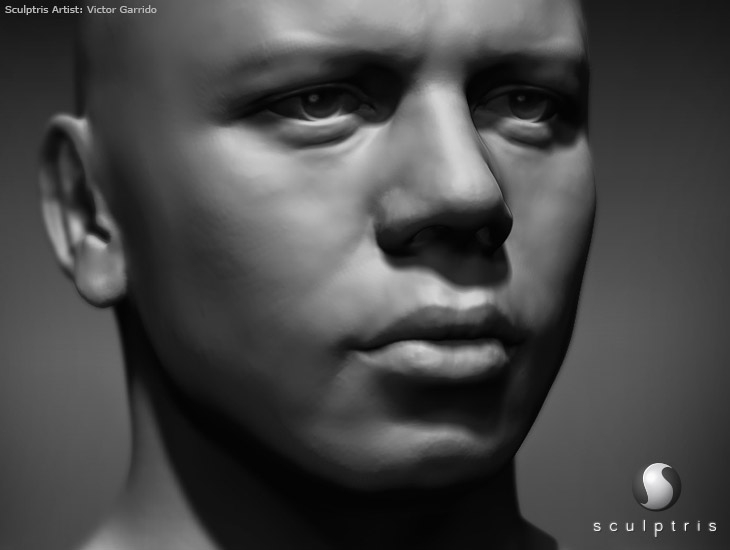

- #Sculptris reference image movie#
- #Sculptris reference image software#
- #Sculptris reference image free#
And the thing is, the basic tools in all sculpting apps behave basically the same.
#Sculptris reference image free#
However, for a hobbyist or a beginner user, it’s pretty expensive and fairly complex (though there is a 30 day free trial). It’s the industry standard when it comes to sculpting. There are quite a few options and we’re going to quickly go over the most popular ones.įirst, we have to mention Zbrush.
#Sculptris reference image software#
The question you probably have right now is what sculpting software you should use. For example, you can add scratches or dents into a robot body that’s supposed to look worn out.ĭents created with the Clay brush to make the Claptrap model look worn out Sculpting software Repairing the shoulder of a 3D scanned statue with the Smooth brush Adding dents to modelsĪnd another use-case that you can try is modifying models created with other techniques. Using COLMAP – doesn’t need Nvidia GPU, but more complex to set-up Using Meshroom – easy to use, but needs an Nvidia GPU to run well We have two photogrammetry tutorials where you scan an object just by taking pictures of it with your phone, check it out if that’s something you’re interested in: Repairing 3D scansĮven if you have no experience with sculpting whatsoever, using just the basic tools, you can easily modify and enhance 3D scans! Especially the smooth tool works like magic. That’s cool and all, but it seems pretty difficult to learn, right? Well, there are several great, beginner-friendly use-cases for sculpting aside from making models from scratch. You start with a piece of (digital) clay that you can push, pull, smooth, grab, pinch or otherwise manipulate. Luckily for us, there is another modeling technique especially suited for modeling organic shapes and it’s called sculpting.ĬAD modeling (left), traditional polygon modeling (middle) and sculpting (right)ģD sculpting is a digital equivalent to traditional clay sculpting.
#Sculptris reference image movie#
It was just a basic orc with a helmet but the mesh is a great starting point to practise some basic busts.But how would you go about modeling your favorite movie character? What about an animal, monster or a D&D miniature? Or even something as simple as adding a dent to model to make it look worn out? Modeling something like that in CAD software would be a total nightmare and traditional polygon modeling is just slightly less awkward tool for something like that. It does improve your head sculpts even if basic, adding to the overall shape and feel of the model.įinally I completely forgot to add this in a previous post but here is a very basic doodle in zbrush using a base mesh Danny Williams use.

It is still important (particularly if basing a sculpt of another) but the 'feel' of the ear tends to be acceptable, especially if just doodling. To me after trying this it helps me realise that in a lot of sculpts the ear while an integral part of the head isn't that needed to nail as much as say the face.I think that using reference is great for this however it can get easily confusing, the geometry just doesn't make sense when trying to convert it to 3d at times! Modelling it in a 3d package like maya may help give a sense of which bits are lower or higher in the ear extrusion itself.I have my first ever zbrush sculpts in the first or second post on here as a reminder. Keeping a log is great to show before and afters. Practice! Keep at it and things do improve.It would fit in to the style of a more cartoony model which is fine and more detail can be added.Īll of these (and all my sculpting in previous posts) has just been with a mouse for now (wacom on loan to a friend) so hopefully that should encourage others to try 3D sculpting! While not the most accurate it was the quickest with average results. A quick crease tool to extenuate some lines and emphasis on the lobe and it seemed to be ok. Doing it this way already pulled the ear out of the model and gave enough room to sculpt inside. From there I used the standard brush on that mound to drag out the lobe and helix (helix is the curved bit at the top left/ the main arch).

Test 4: This was more about the characteristics of the ear to me, I used a regular standard brush to pull out the Tragus (the little knobbly bit on the right) and then a mound for the general ear.


 0 kommentar(er)
0 kommentar(er)
